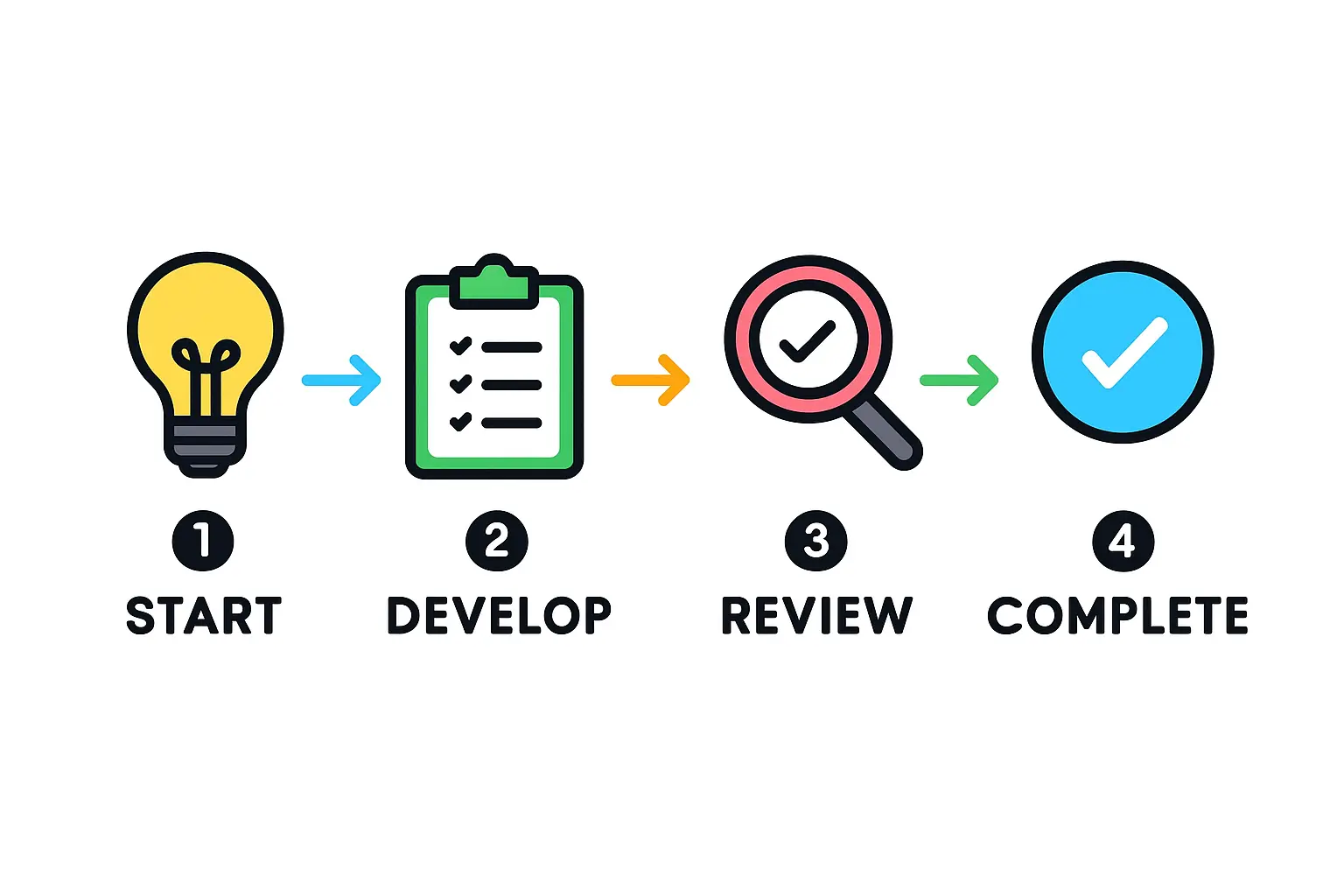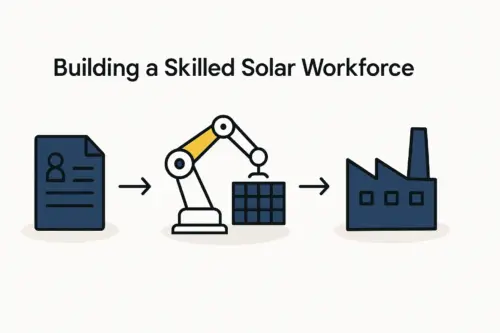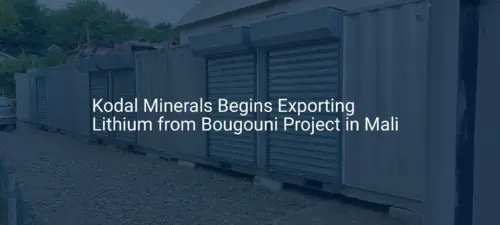An entrepreneur considering a solar module factory in West Africa sees the immense potential: abundant sunlight, growing energy demand, and supportive government policies. Yet the path from vision to a fully permitted, operational facility presents administrative hurdles that can seem opaque from the outside.
For many investors, especially those new to the region, the initial questions around land acquisition and permits can be the most daunting. This guide offers a structured overview of the process for securing industrial land and the necessary permits for a solar module factory in Mali, focusing on the country’s designated economic zones. It outlines the key agencies, critical steps, and strategic considerations to help business professionals navigate this foundational stage with confidence.
Understanding Mali’s Industrial Landscape for Solar Manufacturing
The Malian government, through its Investment Code, actively encourages industrial development within designated areas known as Special Economic Zones (SEZs). These zones are designed as hubs for manufacturing and commerce, offering investors significant advantages.
For a solar panel factory, establishing a presence in an SEZ like the Zone Industrielle de Bamako-Sénou offers three primary benefits:
- Established Infrastructure: These zones typically provide access to essential utilities like electricity, water, and transport links critical for factory operations.
- Streamlined Processes: While bureaucracy is a reality, agencies within these zones are structured to assist industrial investors.
- Fiscal Incentives: The Investment Code provides benefits such as exemptions on import duties for equipment and potential corporate tax holidays for companies operating in SEZs.
These zones are strategically positioned to support not only the domestic Malian market but also regional exports within the Economic Community of West African States (ECOWAS).

The Step-by-Step Process for Land Acquisition and Permitting
Navigating the administrative framework in Mali requires a methodical approach. The process breaks down into four distinct stages, each involving specific government agencies and documentation. Experience from J.v.G. turnkey projects suggests that a timeline of 6 to 12 months is a realistic expectation for completing this entire sequence.
Step 1: Company Registration and Investment Approval
Before any land can be secured, the business must be legally established in Mali. The central agency for this is the Agence pour la Promotion des Investissements au Mali (API-Mali), which serves as a one-stop shop for investment facilitation.
The first steps involve:
- Company Registration: Formally register the business to obtain a certificate from the Registre du Commerce et du Crédit Mobilier (RCCM).
- Investment Certificate Application: Submit an application to API-Mali for an agrément, or investment certificate. This document is the official recognition of the project and the key to unlocking the incentives offered under the Investment Code.
A common challenge for new investors is compiling all the required documentation. A detailed solar module manufacturing business plan is not just an internal tool but an essential document for demonstrating the project’s viability to API-Mali.
Ready to make big Profits?
The solar Industry is Booming
WE HELP NEWCOMERS to the solar industry start their own solar module production line. Customers can make BIG PROFITS by selling modules and finding investors, without wasting money and time on things they don't need!
Step 2: Securing Industrial Land
Once the company is registered and the investment is approved in principle, the next step is securing a suitable plot of land. Within an SEZ, this is typically managed through an allocation process rather than an open-market purchase.
The process involves a formal request submitted to the relevant ministry, often the Ministry of Industry and Commerce, and is sometimes facilitated by API-Mali. Industrial land in these zones is usually provided on a long-term lease. A typical small- to medium-sized solar factory (e.g., 50–100 MW annual capacity) requires a plot of approximately 10,000 to 20,000 square meters to accommodate the main building, storage, and logistical areas.
Step 3: The Environmental Impact Assessment (EIA)
An Environmental Impact Assessment (EIA), known locally as an Étude d’Impact Environnemental et Social (EIES), is a mandatory prerequisite for any industrial project. This process is overseen by the Agence Nationale de l’Environnement et du Développement Durable (ANEDD).
The EIA evaluates the potential environmental and social effects of the factory. For a solar module assembly plant, the assessment focuses on:
- Water consumption and wastewater management.
- Handling and disposal of materials used in the production process.
- Waste management protocols for off-spec or broken materials.
- Occupational health and safety measures for employees.
Engaging a certified local environmental consultant to conduct the study and prepare the report is standard practice. The EIA process alone can take three to six months and must be approved before a construction permit can be issued.
Step 4: Obtaining Construction Permits
With an approved EIA and a confirmed land allocation, the final step is to secure the construction permit (permis de construire). The application is submitted to the urban planning department of the local municipality (Mairie) where the industrial zone is located.
The application package must include detailed architectural and engineering plans that conform to Mali’s national building codes and incorporate any specific conditions mandated by the EIA approval. A thorough understanding of the factory building requirements is crucial at this stage to avoid delays, as the approved plans will dictate every aspect of the physical construction.

Key Challenges and Strategic Considerations
While the process is structured, investors should be prepared for potential challenges and plan accordingly.
Navigating Bureaucracy and Timelines
Governmental processes in any country can be prone to delays. Building professional relationships with officials at the relevant agencies and following up diligently is key. Many successful foreign investors work with a local legal advisor or consultant experienced in navigating these administrative systems. This local expertise can prove invaluable in anticipating bottlenecks and ensuring all paperwork is submitted correctly.
Infrastructure and Logistics
Even within a designated SEZ, performing due diligence on the available infrastructure is critical. Verify the capacity and reliability of the electricity grid, water supply, and internet connectivity at the specific plot. Proximity to major roads or ports is also a vital consideration, given the logistics of importing solar production line equipment and exporting finished modules.

Building a Strong Local Network
Establishing a successful factory is more than a transactional process—it’s about becoming part of the local industrial ecosystem. Engaging with business associations, local authorities, and potential suppliers early on can provide crucial insights and support throughout the project’s setup and operational phases.
Frequently Asked Questions (FAQ)
What are the main costs associated with land acquisition in Mali?
In SEZs, the primary cost is an annual lease fee rather than a purchase price, which varies by location. Additional costs include administrative fees for permits, charges for utility connections, and consultant fees for the Environmental Impact Assessment.
How long does the entire permit process typically take?
Investors should budget 6 to 12 months from company registration to receiving the final construction permit. The timeline can be affected by the completeness of the initial application and the complexity of the project.
Are foreign investors treated differently from local investors?
Mali’s Investment Code is designed to provide equal treatment and incentives to both foreign and domestic investors. However, having a local partner or experienced local representation can significantly help in navigating administrative and cultural nuances.
What kind of tax incentives are available in Mali’s SEZs?
Incentives often include a complete exemption from customs duties and taxes on imported production equipment, as well as corporate tax holidays for a specified number of years. The exact benefits are determined by the size of the investment and detailed in the agrément issued by API-Mali.
Is it better to lease or buy land for a factory?
Within designated industrial zones, long-term leasing is standard and often the only option. This model allows the government to manage the zone’s development strategically while providing investors with the long-term security needed for industrial operations.
Your Next Steps in Planning a Solar Factory
Securing land and permits is a foundational milestone in establishing a solar manufacturing plant. The process, while detailed, is navigable with careful planning, professional guidance, and a clear understanding of the local regulatory environment.
With this framework in mind, the next logical step for a prospective investor is to develop a comprehensive feasibility study that integrates these administrative timelines and costs. A complete turnkey factory setup plan often includes managing these regulatory hurdles as part of the overall project, allowing you to focus on your core business strategy. By understanding these foundational steps, you can transform your vision for local solar manufacturing into an operational reality.






